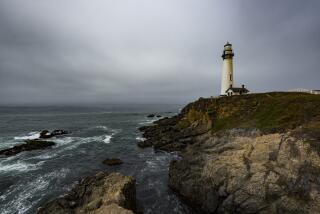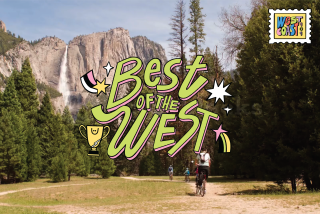A Great Escape From the Familiar
A few springs ago I met some German newspaper editors as they toured the United States. They had sampled New York, Los Angeles, San Francisco and Seattle before spending time in Alaska.
Which, I asked, was their favorite city? San Francisco was pleasant, they agreed, but they left their hearts in Nome.
âItâs the most truly American place we visited,â a Hamburg journalist said. âNome is the real West . . . board sidewalks, saloons with swinging doors, old prospectors, sleds with dog teams. Just like the movies.â
I understood. Be it ever so humble, hunkered there by the Bering Sea, thereâs no place quite like it. In Nome the Germans saw what they came to see, a remnant of frontier America that matched their expectations. This is not so different from U.S. travelers who favor castles on the Rhine over an industrial tour of Frankfurt.
Trading in Future Shock
One joy of travel is to escape the familiar, to trade in future shock--or even present shock--for a gentler time. The most refreshing trips may be those that leave a margin for era.
The 18th Century, for example, is a great place to visit. When you see it alive and well-restored, you might even want to live there. This is part of the enduring old charm of Nantucket Island or Castine in Maine or tidewater Virginia.
I find few villages more restful than Colonial Williamsburg on an October afternoon, when maple leaves dance a brisk quadrille down Duke of Gloucester Street. Even in the pitch of summer there is a magic moment at the end of each Williamsburg day when most callers from the present must leave, and a shawl of timelessness wraps around those fortunate enough to stay the night in a Colonial house.
Two of my favorites are a small weatherboard house called The Quarter, and the Market Square Tavern with its pine-paneled parlor and corner fireplace, where an 18-year-old law student named Thomas Jefferson used to warm himself.
Gold Rush Hamlets
For a 19th-Century spree there are the Gold Rush hamlets of California scattered along the once-rich foothills east of San Francisco Bay. The town of Columbia, off California 49, is a state park and that means crowds in summer and designated parking lots all year long.
I prefer arriving where I donât feel expected. Even without the hope of gold, I am drawn by the names: Volcano, Murphys, Rough and Ready, Sheepranch, Copperopolis, Mount Bullion, Jenny Lind, Jackass Hill, French Corral, Angels Camp.
Volcano, at Christmastime, is worth framing: the white, balconied St. George Hotel is spruced with wreaths and holly. The village street lamps and board fences are hung with greenery. Did I see the lyrics of old carols scripted in the air?
In Search of History
Five hundred towns were born in these hills in the mad days around 1849. More than half died in infancy. Those that survive attract travelers in search of history, old bottles, mellow photographs, weed-wrapped tombstones and maybe a nugget in a stream.
Alaskaâs gold rush towns, which boomed briefly around the turn of this century, also lean on tourism, but the harsher climate and greater isolation give a wistful quality to life. Arctic summers seem spent in preparation for winters.
And thereâs one big change in Nome: They replaced the boardwalks with concrete. The Germans would not like that.
More to Read
Sign up for The Wild
Weâll help you find the best places to hike, bike and run, as well as the perfect silent spots for meditation and yoga.
You may occasionally receive promotional content from the Los Angeles Times.






